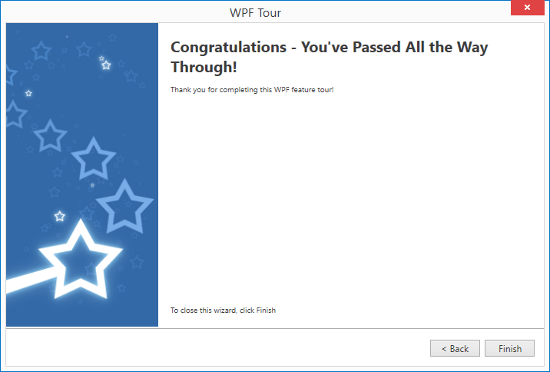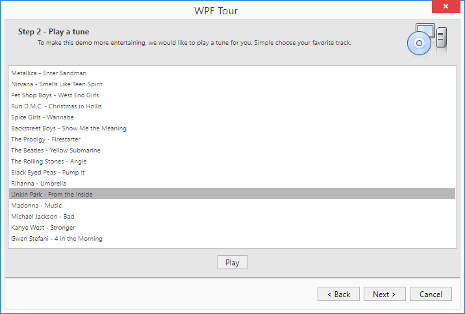Wizard Control
- 2 minutes to read
Overview
The WPF Wizard is a tool for building dialogs with multiple pages that guide your end-users through a specific process (e.g., product installation).

The list below outlines the main Wizard Control features:
- three types of pages, each with its own mark-up and set of features;
- embedded wizard buttons;
- various page templates;
- rich navigation capabilities;
- suits for creating both simple wizards where pages change one by one in a strict order, and wizards with a non-linear page sequence where one page can lead to various other pages depending on the specific criteria;
- WizardService designed to use the Wizard Control in accordance with MVVM.
Concepts
-
The Wizard control provides pages of three types - start page, regular page and finish (completion) page. Pages of different types have their own specific mark-ups and are designed to display different types of content. This article outlines unique features specific for pages of this or that individual type, as well as describes common concepts shared by pages of all types.
-
Wizard pages can display four buttons - Back, Next, Finish and Cancel. In this article, you will learn how to display the required buttons for each individual page.
-
This article demonstrates how the Wizard navigates from one page to another in a simplest scenario, when one page follows another in a strict order.

Examples
The Wizard is represented by the DevExpress.Xpf.Controls.Wizard class. To use it in your application, add a reference to the DevExpress.Xpf.Controls.v25.2.dll assembly.
The following examples illustrate how to implement the Wizard Control.